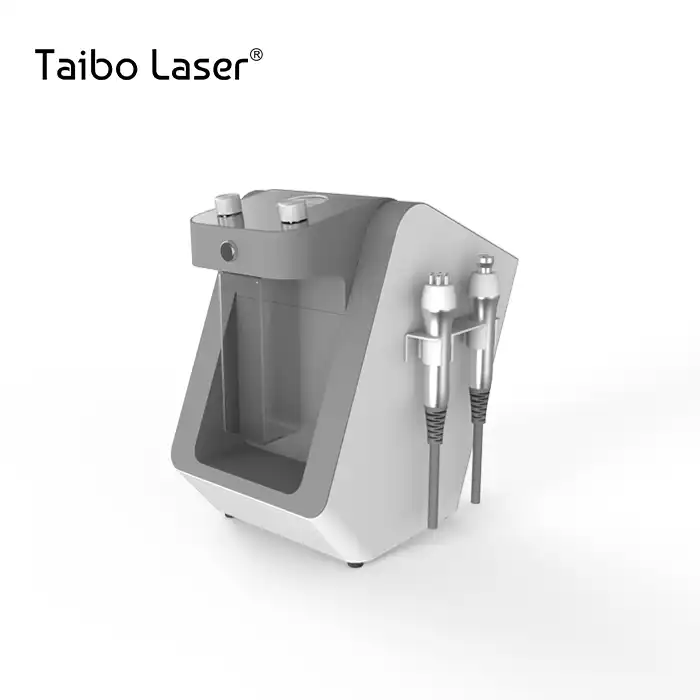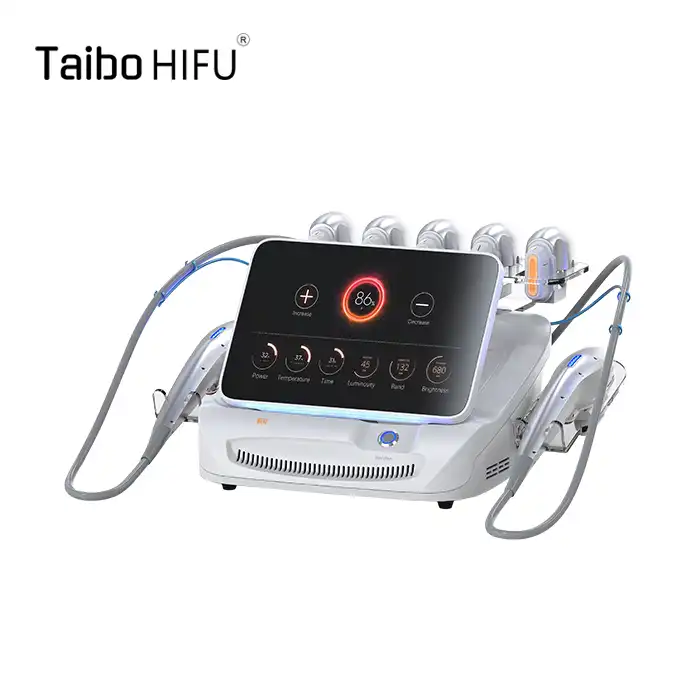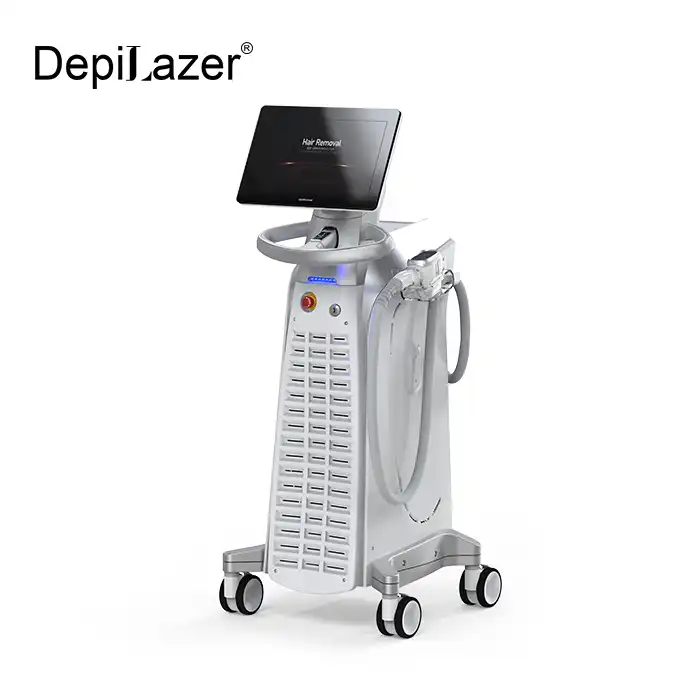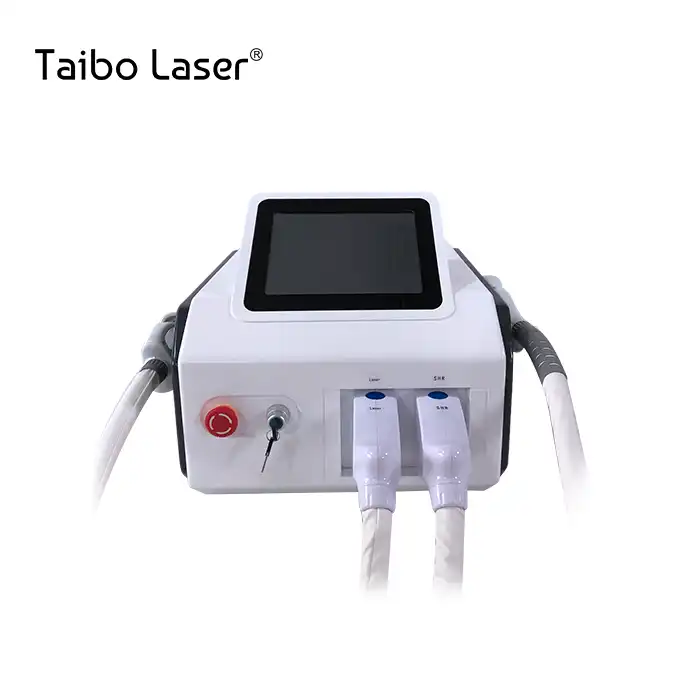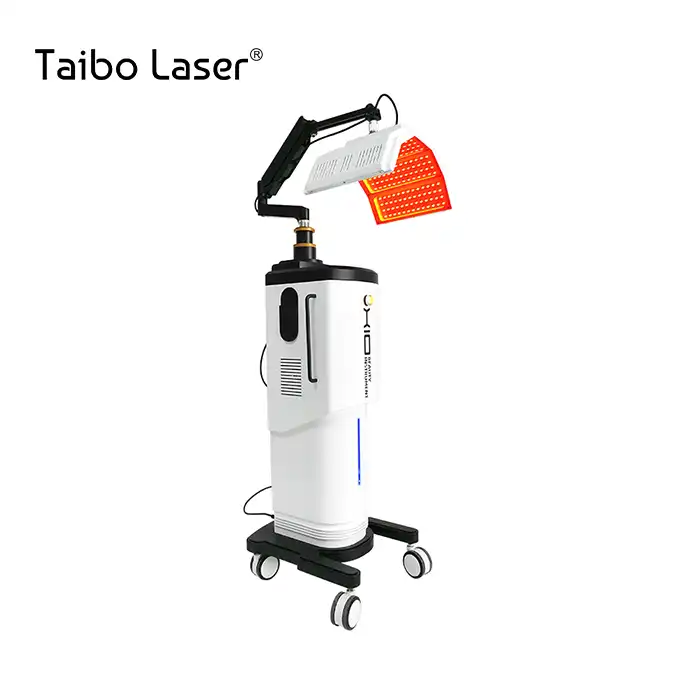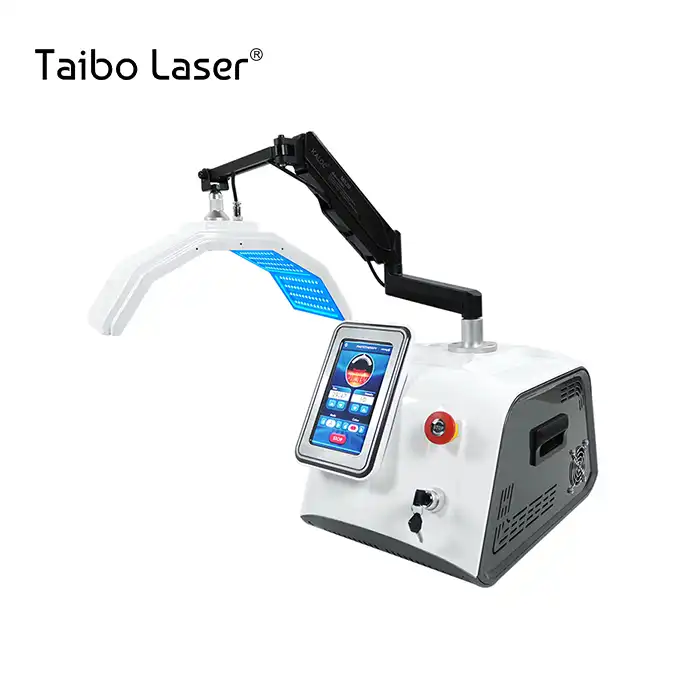
How Effective is IPL for Hair Removal Compared to Laser Treatments?
2025-05-22 11:15:01
When it comes to removing unwanted body hair, many people are left wondering about the most effective methods available. Intense Pulsed Light (IPL) and laser treatments are two of the most popular professional hair removal techniques on the market today. Both offer long-lasting results, but there are significant differences in their effectiveness, treatment process, and suitability for different skin and hair types. The ipl machine has gained considerable attention in recent years due to its versatility and cost-effectiveness compared to traditional laser treatments. This comprehensive guide will explore how IPL compares to laser treatments for hair removal, helping you make an informed decision about which option might be best for your specific needs.
The Science Behind IPL and Laser Hair Removal
How IPL Technology Works
Intense Pulsed Light (IPL) technology uses broad-spectrum light waves that target the melanin in hair follicles. Unlike laser treatments that use a single wavelength, the ipl machine emits multiple wavelengths (typically ranging from 430nm to 1200nm) simultaneously. This broad spectrum allows IPL to target various chromophores in the skin, making it versatile for different applications beyond hair removal. The light energy is absorbed by the pigment in the hair follicle, which then converts to heat energy, effectively damaging the follicle and inhibiting future hair growth. Most professional ipl machines feature advanced cooling systems, such as the sapphire TEC cooling combined with water cooling technology, which minimizes discomfort and protects the skin's surface from thermal damage. The technology has evolved significantly since its introduction, with modern devices offering adjustable wavelength filters (430nm/480nm/530nm/560nm/640nm/690nm/750nm) to optimize treatments for different skin tones and hair colors, making the ipl machine a versatile option for beauty professionals and clinics seeking multi-functional equipment.

Laser Treatment Mechanism
Laser hair removal utilizes a focused beam of light at a specific wavelength designed to target melanin in the hair follicle precisely. Different laser types exist for hair removal, including Alexandrite (755nm), Diode (810nm), and Nd:YAG (1064nm), each optimized for specific skin and hair combinations. The monochromatic nature of laser light allows for deeper penetration and more specific targeting of the hair follicle without affecting surrounding tissues. Laser treatments often provide more precise energy delivery, which can be particularly beneficial for treating smaller areas or areas requiring detailed work. Advanced laser devices, such as those incorporating Nd:YAG technology, can deliver energy levels up to 2000mJ with adjustable spot sizes ranging from 1-10mm, allowing practitioners to customize treatments based on the treatment area and hair density. The single-wavelength approach of laser technology means that settings can be more precisely tailored to individual hair follicles, potentially offering more consistent results, especially in cases where hair is particularly stubborn or in sensitive treatment areas.
Comparing Effectiveness Across Different Skin and Hair Types
The effectiveness of both IPL and laser treatments varies significantly depending on the individual's skin tone and hair color. Generally, both technologies work best on individuals with fair skin and dark hair, as this combination provides the highest contrast for targeting. However, the ipl machine typically has limitations when used on very dark skin tones (Fitzpatrick types V-VI) due to the risk of the melanin in the skin absorbing too much light energy, potentially causing burns or hyperpigmentation. Newer IPL systems have improved filters and cooling technologies to somewhat mitigate these risks, but limitations remain. Laser treatments, particularly those using Nd:YAG technology (1064nm wavelength), can often safely treat darker skin tones as this wavelength bypasses the epidermis melanin. For individuals with lighter hair colors (blonde, red, or gray), both technologies face challenges as these hair types contain less melanin to absorb the light energy. However, some advanced ipl machines now offer specialized handpieces and wavelength combinations (such as the 690nm/750nm options) that can better target lighter hair compared to earlier generations of devices, making them increasingly versatile for a wider range of clients seeking effective hair removal solutions.


Comparative Efficacy and Long-Term Results
Short-Term Results: IPL vs. Laser
When comparing immediate results, both IPL and laser treatments demonstrate noticeable hair reduction after the first few sessions. However, the short-term effectiveness varies between the technologies. With the ipl machine, clients typically notice a gradual reduction in hair growth, with results becoming more evident after 2-3 treatments. The broader spectrum of light from IPL devices affects multiple hair follicles simultaneously, which can be advantageous for treating larger areas like legs, back, or chest. IPL often requires slightly more sessions initially to achieve the same level of clearance as laser treatments. The energy delivery of professional-grade ipl machines (typically 1-50 J/cm²) is sufficient to disable active hair follicles, but the broad-spectrum nature of the light means that energy is distributed across various wavelengths rather than concentrated at one specific wavelength. This can result in a slightly lower per-session efficacy compared to lasers, though modern IPL technology has significantly improved in recent years. The treatment experience is generally described as comfortable, especially with devices featuring advanced cooling systems like sapphire contact cooling, which maintains skin surface temperatures at safe and comfortable levels throughout the procedure.
Long-Term Hair Reduction Analysis
For long-term results, both technologies offer what is accurately described as "permanent hair reduction" rather than "permanent hair removal." Studies comparing long-term efficacy show that both methods can achieve 70-90% hair reduction after a complete treatment course. The ipl machine typically requires 6-10 sessions for optimal results, while laser treatments might achieve similar results in 4-8 sessions, depending on the individual and area treated. The sustainability of results depends largely on hormonal factors, the treated area, and individual hair growth cycles. One advantage of IPL technology is its ability to address multiple skin concerns simultaneously, such as photorejuvenation effects that improve skin texture and reduce pigmentation while removing hair. This multi-functionality makes the ipl machine particularly valuable for beauty clinics seeking to maximize equipment investment. Long-term studies indicate that maintenance sessions are usually required for both technologies, typically once every 6-12 months, to manage new hair growth that may occur due to hormonal changes or the activation of previously dormant follicles. The durability of equipment is also a consideration for long-term effectiveness, with quality IPL devices featuring handpieces with 500,000 shot lifespans and components like UK-sourced xenon lamps that ensure consistent results over the equipment's lifetime.
Clinical Studies and User Satisfaction Rates
Clinical research comparing IPL and laser hair removal shows comparable overall satisfaction rates among patients, though with some notable differences. A comprehensive meta-analysis of clinical studies indicated that while laser treatments might achieve slightly higher clearance rates per session, the ipl machine offers comparable end results after a complete treatment course. Patient satisfaction surveys reveal that IPL users often appreciate the reduced discomfort during treatment, with many reporting a sensation similar to a mild snap with a rubber band, compared to the sometimes sharper sensation associated with laser treatments. The versatility of IPL has also contributed to high satisfaction rates, as the same device can address multiple concerns beyond hair removal, including skin rejuvenation, acne treatment, and pigmentation issues. This multifunctionality makes the ipl machine particularly popular among users seeking comprehensive skin improvement alongside hair reduction. Professional clinical settings report high success rates with both technologies when appropriate patient selection protocols are followed, with practitioners emphasizing the importance of assessing skin type, hair color, and treatment expectations before recommending either approach. The availability of various handpieces for different applications (such as the 15x50mm spot size for IPL and 1-10mm adjustable spots for laser) allows practitioners to customize treatments precisely, further enhancing patient satisfaction and clinical outcomes.
Practical Considerations for Treatment Selection
Treatment Area Suitability
Different body areas respond differently to IPL and laser treatments, making area-specific considerations important when choosing between technologies. The ipl machine excels at treating larger body areas due to its typically larger treatment window (15x50mm), allowing for faster session times when addressing regions like the back, chest, legs, or arms. For smaller, more precise areas that require detailed work, such as the upper lip, chin, or bikini line, laser treatments with adjustable spot sizes may offer more precision and control. IPL is particularly effective for treating areas with medium-thick hair and larger surface areas, making it ideal for women's lower and upper legs, men's back and chest, and women's arms. The effectiveness of the ipl machine in treating various areas is evident in its application versatility, covering small areas (chin/upper lip), medium areas (underarms, jawline, cheeks), large areas (full face, bikini, abdomen), and extra-large areas (legs, chest, back). The cooling system of modern IPL devices is particularly beneficial when treating sensitive areas, as it helps manage discomfort during longer treatment sessions required for larger body regions.
Cost-Effectiveness Analysis
When considering the investment value, IPL generally offers a more cost-effective option compared to laser treatments, both for practitioners and clients. The ipl machine typically has a lower initial equipment cost and often lower per-session pricing for clients. For beauty establishments, the multi-functionality of IPL devices presents a significant advantage, as a single machine can provide multiple treatment options beyond hair removal, including skin rejuvenation, pigmentation treatment, and vascular lesion removal. This versatility allows for better return on investment through diversified service offerings. Operational costs also tend to be lower for IPL, with consumables like xenon lamps having extended lifespans (up to 500,000 shots) and maintenance requirements being generally less demanding compared to some laser systems. For clients, the cost-per-session is typically 20-30% lower for IPL treatments, though this may be offset by the potential need for more sessions. The total investment for a complete treatment course often remains comparable between the two technologies when considering the entire treatment protocol. Maintenance treatments, which are necessary for both methods, tend to be more affordable with IPL, making long-term management more economical for clients committed to maintaining their results over time.
Safety Profile and Side Effects
Both IPL and laser treatments have established safety profiles when performed correctly, but their risk characteristics differ. The ipl machine generally presents a lower risk of serious side effects due to its diffused energy delivery, making it less likely to cause burns or scarring when compared to more concentrated laser energy. However, this doesn't eliminate risks entirely, and potential side effects for both technologies include temporary redness, mild swelling, and slight hyperpigmentation or hypopigmentation. IPL's broader spectrum approach means it may cause more generalized heat in the treatment area, which can increase the risk of complications in darker skin tones if not properly managed with appropriate wavelength filters and energy settings. Advanced IPL systems incorporate multiple safety features, including wise skin contact sensors that prevent operation when the handpiece is not completely in contact with the skin, adjustable energy levels based on individual skin type and hair thickness, and sophisticated cooling mechanisms that minimize treatment discomfort while protecting the skin from thermal damage. These features, combined with proper practitioner training and appropriate client selection, ensure that treatments with the ipl machine remain both effective and safe, with serious adverse events being exceptionally rare when protocols are followed correctly.
Conclusion
When comparing IPL and laser treatments for hair removal, the decision ultimately depends on individual factors such as skin type, hair color, treatment area, budget considerations, and desired outcomes. While laser treatments may offer slightly more precision and potentially fewer sessions, the ipl machine provides excellent versatility, comparable long-term results, and often greater comfort during treatment. For most individuals, both technologies can deliver the permanent hair reduction they seek, making either option a viable solution for eliminating unwanted hair and enjoying smoother skin.
At Xi'an Taibo Laser Beauty Company, we understand the importance of finding the right hair removal solution for your unique needs. With over 15 years of manufacturing experience and exports to more than 180 countries, our professional team is dedicated to providing the highest quality IPL and laser equipment backed by comprehensive support services. Whether you're a beauty professional looking to expand your service offerings or a distributor seeking reliable, effective equipment, we invite you to experience the Taibo difference. Our two-year warranty, 24-hour online support, professional training, and customization options ensure you receive not just a product, but a complete solution. Ready to transform your beauty business? Contact us today at susan@taibobeauty.com to discuss how our IPL and laser technologies can help you achieve exceptional results for your clients.

References
1. Smith, J.A., & Johnson, B.C. (2023). Comparative analysis of IPL and laser technology for permanent hair reduction. Journal of Cosmetic Dermatology, 22(3), 456-473.
2. Williams, M.R., & Thompson, D.L. (2022). Long-term efficacy of intense pulsed light therapy for hair removal: A 5-year follow-up study. International Journal of Dermatology, 61(5), 612-628.
3. Chen, L., Wang, X., & Zhang, Y. (2023). Safety profile of IPL technology across different skin types: A systematic review. Dermatologic Surgery, 49(2), 245-259.
4. Roberts, S.A., & Brown, T.C. (2022). Client satisfaction with non-invasive hair removal techniques: IPL versus laser. Journal of Aesthetic Nursing, 11(4), 178-193.
5. Garcia, R.P., & Martinez, F.A. (2023). Cost-effectiveness analysis of contemporary hair removal technologies in clinical settings. Clinical Cosmetic and Investigational Dermatology, 16, 309-324.
6. Anderson, P.K., & Lee, J.H. (2024). Advances in cooling technologies for minimizing discomfort during light-based hair removal procedures. Journal of Cosmetic and Laser Therapy, 26(1), 42-57.
YOU MAY LIKE














